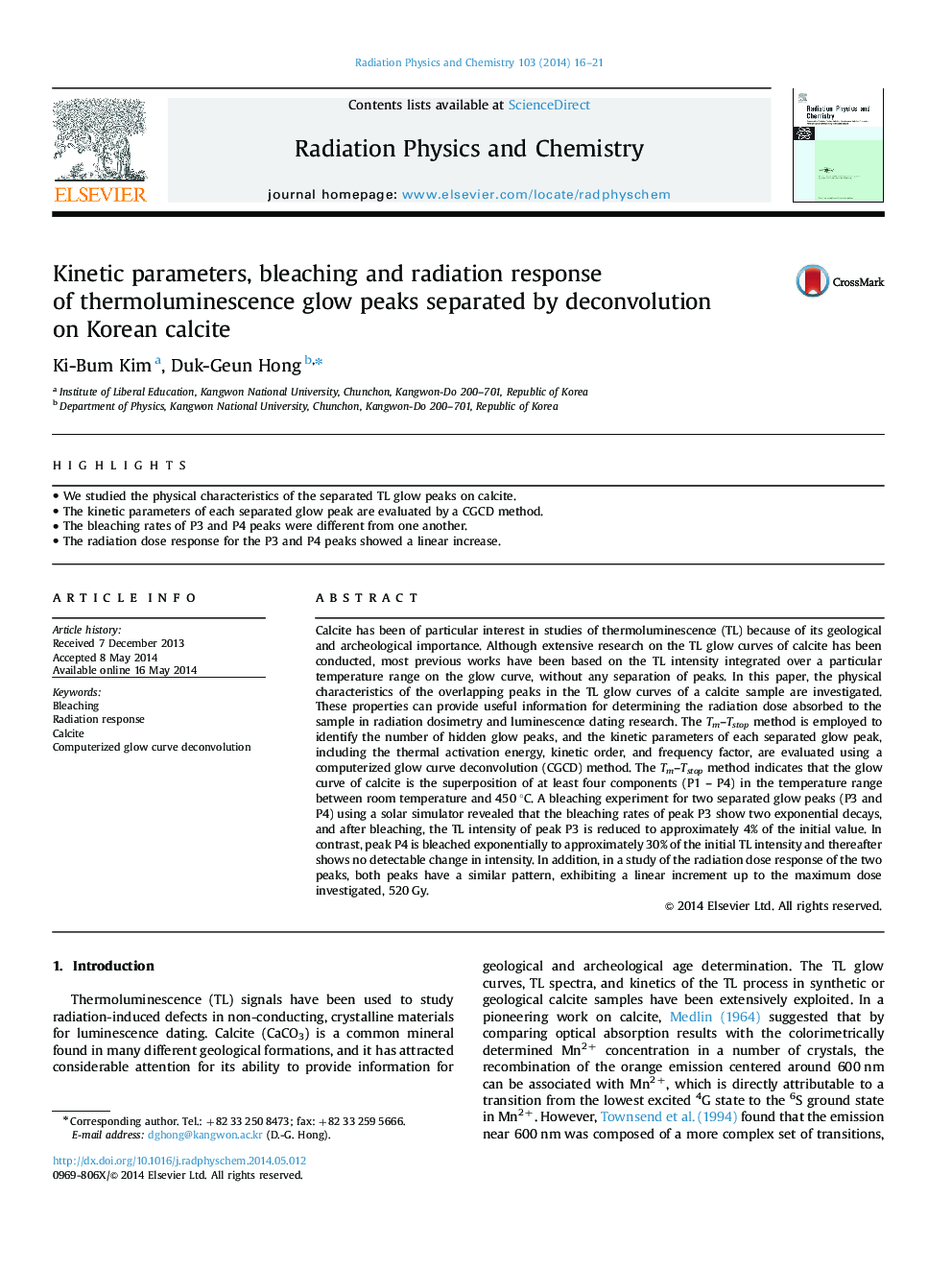| کد مقاله | کد نشریه | سال انتشار | مقاله انگلیسی | نسخه تمام متن |
|---|---|---|---|---|
| 1891213 | 1533521 | 2014 | 6 صفحه PDF | دانلود رایگان |

• We studied the physical characteristics of the separated TL glow peaks on calcite.
• The kinetic parameters of each separated glow peak are evaluated by a CGCD method.
• The bleaching rates of P3 and P4 peaks were different from one another.
• The radiation dose response for the P3 and P4 peaks showed a linear increase.
Calcite has been of particular interest in studies of thermoluminescence (TL) because of its geological and archeological importance. Although extensive research on the TL glow curves of calcite has been conducted, most previous works have been based on the TL intensity integrated over a particular temperature range on the glow curve, without any separation of peaks. In this paper, the physical characteristics of the overlapping peaks in the TL glow curves of a calcite sample are investigated. These properties can provide useful information for determining the radiation dose absorbed to the sample in radiation dosimetry and luminescence dating research. The Tm–Tstop method is employed to identify the number of hidden glow peaks, and the kinetic parameters of each separated glow peak, including the thermal activation energy, kinetic order, and frequency factor, are evaluated using a computerized glow curve deconvolution (CGCD) method. The Tm–Tstop method indicates that the glow curve of calcite is the superposition of at least four components (P1 – P4) in the temperature range between room temperature and 450 °C. A bleaching experiment for two separated glow peaks (P3 and P4) using a solar simulator revealed that the bleaching rates of peak P3 show two exponential decays, and after bleaching, the TL intensity of peak P3 is reduced to approximately 4% of the initial value. In contrast, peak P4 is bleached exponentially to approximately 30% of the initial TL intensity and thereafter shows no detectable change in intensity. In addition, in a study of the radiation dose response of the two peaks, both peaks have a similar pattern, exhibiting a linear increment up to the maximum dose investigated, 520 Gy.
Journal: Radiation Physics and Chemistry - Volume 103, October 2014, Pages 16–21